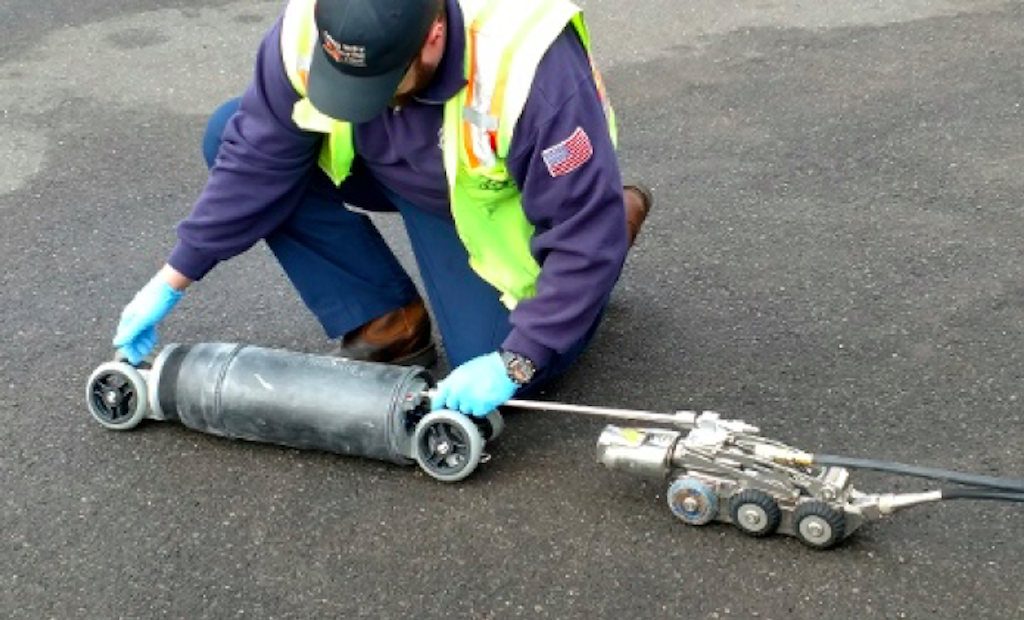Interested in Rehab/Relining?
Get Rehab/Relining articles, news and videos right in your inbox! Sign up now.
Rehab/Relining + Get AlertsThe foundation of Franklin Township’s Sewerage Authority’s sewer inspection program is a dedicated focus on preventive maintenance.
“Being proactive is the only way we can manage over 200 miles of sewer pipes inundated with infiltration,” says Scott Nocero, Franklin Township (New Jersey) Sewerage Authority’s (FTSA) Operations Manager. Elements of their preventive maintenance program include ongoing sewer flushing, inspections and rehabilitation. These efforts have resulted in a significant reduction in inflow and infiltration (I&I) throughout their collection system.
“Timely and effective rehabilitation is the cornerstone of our I&I reduction program,” Nocero says. “My crew works meticulously to identify sources of I&I — whether they are cleaning with a video nozzle or inspecting with a sewer camera, if we have eyes inside our pipes we are looking for problem areas and strategizing what is needed to proactively address them.”
Prior to 2016, FTSA’s inspection crew had to report defects causing infiltration to staff engineers who would decide whether the defect was critical enough to require rehabilitation. A bidding process would then take place before a contractor could come in to reline the defective pipe segment.
“The whole process took a couple of weeks from start to finish. Meanwhile, water infiltration was filling the pipe — needlessly adding to the water we’d have to pump and transport to the wastewater treatment facility. If we are knowingly paying to treat clean water we are doing something wrong.”
Bruce Kosensky, Envirosight’s direct sales manager and one of Nocero’s long-time advisors, approached Nocero with information on a new mechanical point repair solution that could help the FTSA inspection crew take matters in their own hands.
Nocero asked for an in-field demo of Quick-Lock pipe repair from Pipeline Renewal Technologies. “It was eye-opening to see that we had most of the equipment and manpower needed to perform point repair pipe rehabilitation in-house,” he says. “The process was quick and simple and my crew was most excited about adding another skill with little to no training — we quickly decided we needed to add Quick-Lock to our toolbox.”
Quick-Lock is a stainless steel sleeve that structurally reinforces deteriorating sewer lines and seals out infiltration. It’s delivered to the repair location on a wheeled flow-through packer pushed by a CCTV crawler. Once in position, air pressure supplied to the packer expands the sleeve tightly against the host pipe wall — sealing up any defects in the pipe.
.png) Now when the FTSA’s sewer inspection crew identifies a pipe with a defect they can make a quick assessment to determine if it’s a good candidate for Quick-Lock point repair, and if so, they get a jump on fixing the problem. “For example, just last week we found a leaky joint and were able to rehabilitate the pipe segment within an hour,” Nocero says.
Now when the FTSA’s sewer inspection crew identifies a pipe with a defect they can make a quick assessment to determine if it’s a good candidate for Quick-Lock point repair, and if so, they get a jump on fixing the problem. “For example, just last week we found a leaky joint and were able to rehabilitate the pipe segment within an hour,” Nocero says.
The cost savings have been substantial for FTSA. “The Quick-Lock point repair costs us $575 per repair, plus the cost of labor which we are paying for whether or not we’re doing the repair. Prior to Quick-Lock, we were spending $2,500 to $2,800 to reline problem pipes presenting infiltration. Now, we only reline pipes that show multiple defects within a 4-foot segment and could benefit from comprehensive relining — for everything else we use Quick-Lock.”
In the past two months FTSA has performed seven point repairs using the Quick-Lock system — saving them over $6,500 per month.
“Even FTSA’s Board of Commissioners has applauded our efforts to embrace and use point repair technology to save time and money, decrease our response time and tackle I&I head-on,” Nocero says. “Being able to show them our progress with implementing a point repair workflow through before and after videos has been very fulfilling.
“Taking our sewer cleaning and inspection program and making it into a comprehensive sewer management program has unequivocally been one of the best decisions we’ve made. My advice for anyone looking to implement a similar point repair workflow is to start by getting an in-field demo. Seeing firsthand how the whole workflow performs in your system can help you determine if it is suited for the pipes you manage. Also, get your whole crew in on the demo — their buy-in is a key component to success.”
Click here to request an in-field demo of Quick-Lock sewer point repair.






